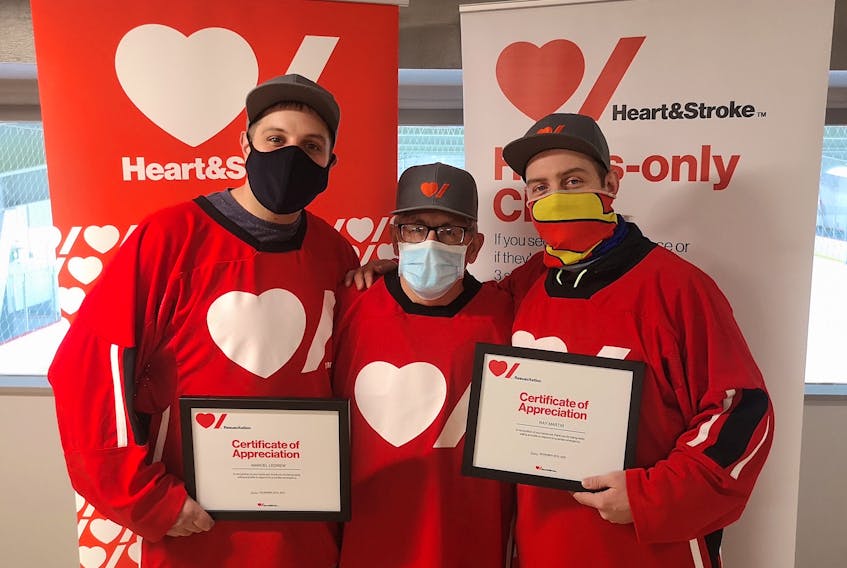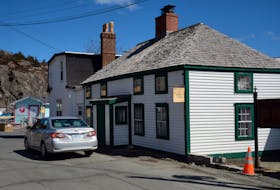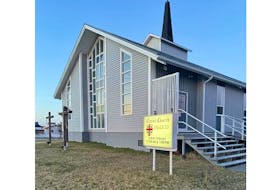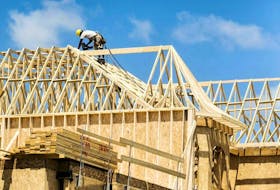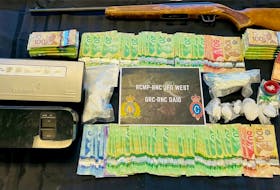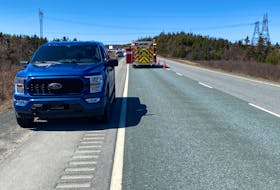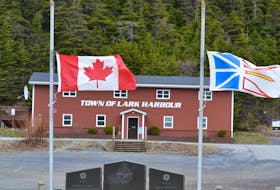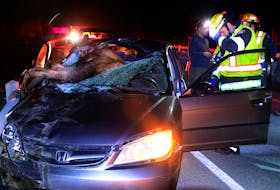It’s not luck that kept Larry Manning’s name out of the obituaries after he suffered a heart attack, but an automated external defibrillator (AED) inside of Twin Rinks in St. John’s, and the quick reaction of two employees, Ray Martin and Marcel Ledrew.
“I left the dressing room and … one of the guys had said something and I joked back,” Manning said. “Next thing I remember (is) waking up in hospital and asking my wife, 'Did you pick up my grandson?' Here it was, four o’clock in the morning. I thought he was still in school.”
Looking toward Martin and Ledrew, he says, “I was dead, and they brought me back. They saved my life.”
When they saw Manning lying on the floor, Martin began doing chest compressions. For several minutes, Manning wasn’t breathing.
“Everything was a blur, it just all happened so fast,” Martin said. “(A) very scary, intense situation.”
His co-worker, Ledrew, went and grabbed the AED. While they listened for the AED’s instructions — the machines guide users through every step — Martin continued doing chest compressions.
“It seemed like forever, I tell you,” Ledrew said.
And while it’s something he says he doesn’t want to have to do again, “if I had to do it again, I’d feel 100 per cent confident.”
But the only thing that mattered, they said, was that Manning was alive.
“At the end of the day, we had some life in the man just as the paramedics showed up,” Martin said. “It was definitely a relief (when) they showed up. I just had to get up and go out by the door and go for a walk, gather my thoughts, just thinking, what the frig just happened, right?”
Ledrew said he kept thinking, “What if? What if?”
Manning’s wife, Sheila Ryan, said it was quite a shock to find out they had used the AED three times on her husband, because he is so active.
“I was just so glad that he was playing hockey, because he was exactly in the right place,” she said. “If we had been at our cabin, which is 45 minutes away, he wouldn’t have made it.”
Aside from Martin and Ledrew, who she considers her newly adopted sons, the AED was key in his survival, she said.
“That machine was what did it,” she said.
Frank Healey, the senior community manager in Altantic Canada for the Heart and Stroke Foundation, said, “We’re just glad that the AED was here and the boys knew what to do.”
Having AEDs in as many places as possible is imperative, he said.
“These are the types of things that should be everywhere,” he said. “It should be a part of building codes. A new building goes up, an AED should go in.”
Healey says he encourages anyone interested in training or finding out more about AEDs to go online to heartandstroke.ca.
Andrew Waterman is a reporter in St. John’s.

